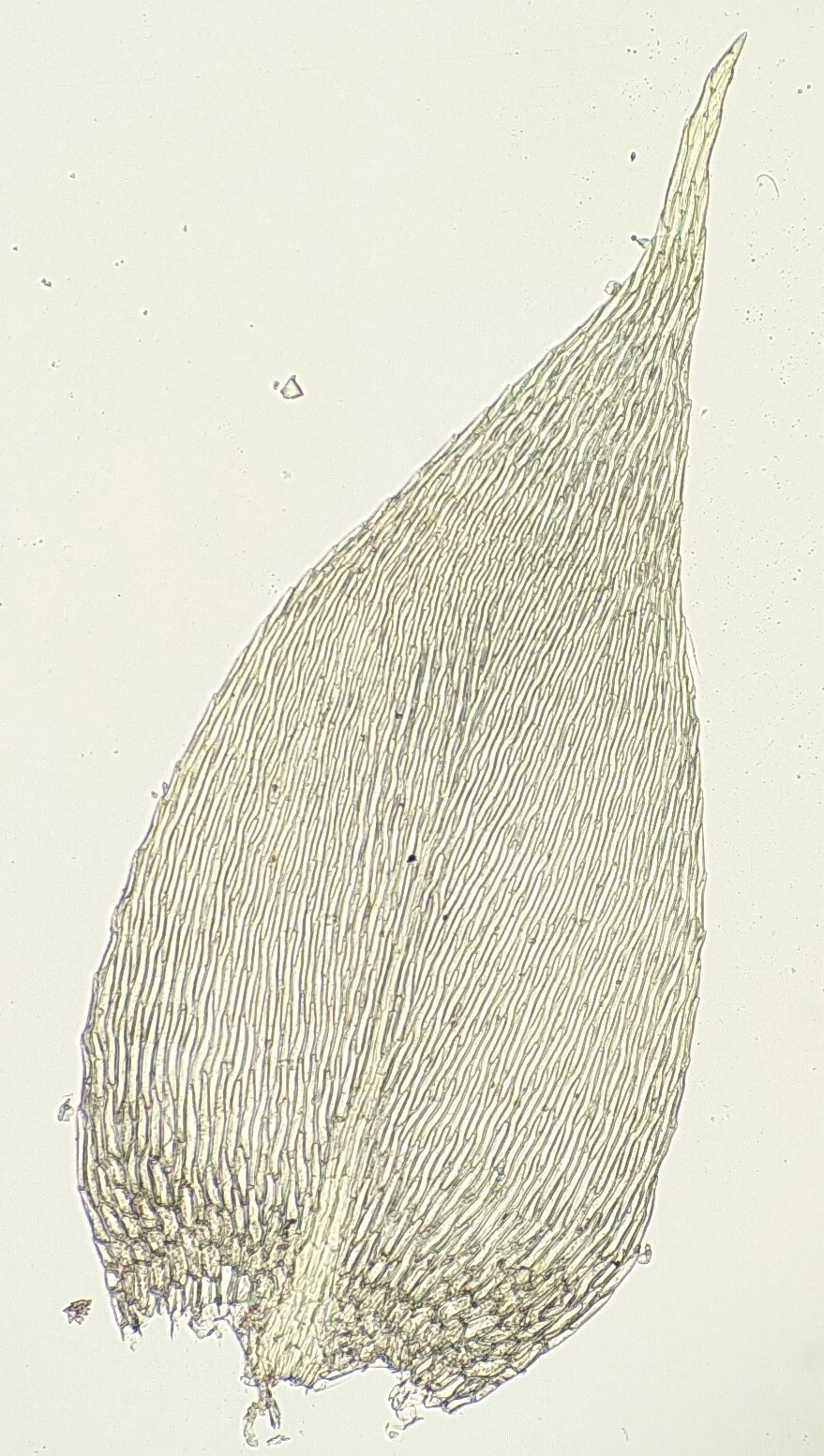Brachythecium salebrosum
(Hoffm. ex F.Weber & D.Mohr) Schimp.Autoicous. Loose or compact mats on soil, rocks or tree trunks. Stems prostrate to ascending, 30–75 mm long, irregularly branched, green or pale brown, covered with brown rhizoids on ventral surface, central strand present, branches to 8 mm long. Stem and branch leaves differentiated; cells linear, 40–149 μm long, 5–10.5 μm wide, smooth, shorter and wider near base; alar cells oblate, quadrate or rectangular, 12–20 μm long, 10–13 μm wide, not inflated, in distinct rounded-square or ovate groups extending c. 12 cells up leaf margin and 1/3–1/2 distance to costae. Stem leaves erect to erect-spreading, not second, scarcely altered when dry, ovate-lanceolate, 2.2–2.5 (–3) mm long, 0.7–1 mm wide, weakly concave, slightly or strongly plicate; costae extending 2/3–3/4 leaf length, ending in an abaxial spine or not; apices acuminate; margins entire or serrulate toward apices, usually recurved in basal half or more on one or both sides. Branch leaves lanceolate to triangular, 1.2–2 mm long, 0.45–0.75 mm wide, weakly concave, slightly or strongly plicate; apices acuminate; margins serrulate toward apex, rarely almost entire. Setae 10–40 mm long, smooth, red-brown. Capsules inclined to horizontal, oblong-ovoid, curved, 1.5–2 mm long. Operculum rostrate, c. 0.8 mm long.
GleP, VVP, GipP, OtP, WaP, Gold, CVU, GGr, NIS, EGL, EGU, WPro, HSF, HNF, OtR, Strz, MonT, HFE, VAlp. Widespread along and south of the Great Dividing Range in a variety of habitats including rainforest, fern gullies in wet-sclerophyll forest, woodland, beside creeks and rivers, and alpine grassland. Also Qld, NSW, ACT and Tas. New Zealand, Kerguelen and Macquarie Islands, North America, Eurasia and northern Africa.
 Spinning
Spinning

